Australia is a place that’s, well… different. From kangaroos bounding across the landscape to beaches that aren’t sandy, and animals you won’t find anywhere else, it’s a land full of surprises.
There are plenty of fun and interesting facts to learn about Australia before visiting it.
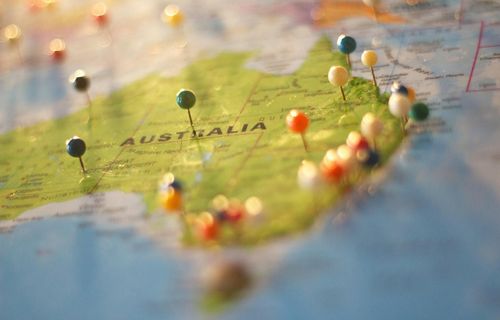
Australia Is the World’s Smallest Continent
Australia is the smallest of the world’s continents, covering only an area of 7.7 million square kilometers. It is bounded by the Indian and the Pacific Oceans.
More interesting facts about Australia:
- The continent has six states and two territories.
- Its highest point is Mount Kosciuszko; its lowest, is Lake Eyre.
- Australia has deserts, rainforests, and a long history with the indigenous Aboriginals.
- It also exports minerals and farm products.
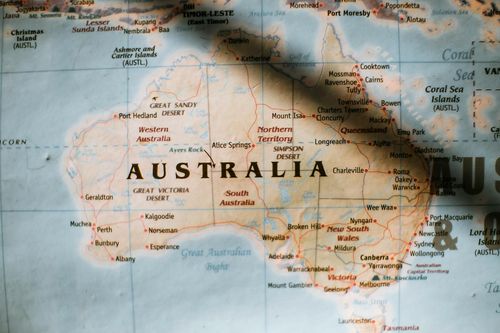
The Great Barrier Reef Is Visible From Space
The Great Barrier Reef, extending more than 2,300 km, can be seen from space. Off Queensland in Australia, the coral reef system has about 2,900 reefs and 900 islands. It was also listed as a UNESCO World Heritage site.
The reef supports tremendous marine life but is threatened by climate change and pollution. It is also an important part of Australia’s tourism industry.
There are countless fun facts about the Australian coral reef, including how the Great Barrier Reef supports incredible marine life while also playing a crucial role in the country’s tourism industry.
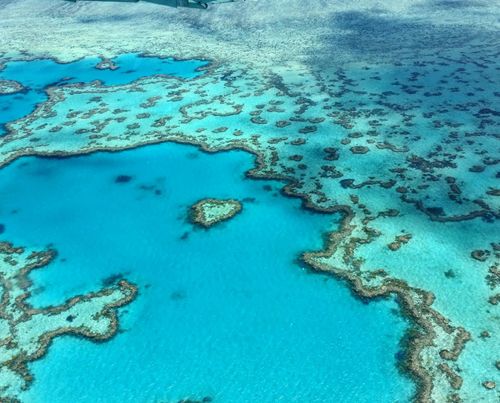
Australia Has Over 60 Different Wine Regions
Australia has more than 60 wine regions within its states and territories. Vineyards are found throughout most varied climates and soils. Among the most famous ones are Barossa Valley, Hunter Valley, and Yarra Valley.
Australian wine production, which started back in the 18th century, includes Shiraz, Chardonnay, and Cabernet Sauvignon, among others. This industry is vital both to exports and local consumption
More Than 80% of Australians Live on the Coast
Over 80% of Australians live within 100 km of the coast. In fact, major cities like Sydney, Melbourne, and Brisbane all sit on or near the coastlines. Most coastal regions have excellent ports and trade.
In contrast, inland Australia is very sparsely populated, as it is a harsh, arid desert and there are limited water sources. This vast interior, known as the “Outback,” faces considerable challenges for development.
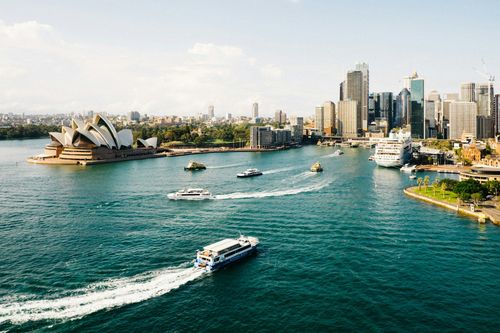
Photo by Dan Freeman on Unsplash
Australia Has the World’s Largest Cactus
Australia has the largest cactus plantation in the world. That is Cactus Country situated in Strathmerton, Victoria. The place covers over 12 acres with cacti and succulents from North and South America and Africa.
Australia is an interesting tourist destination, offering fascinating facts about its unique wildlife and cacti.
The Australian Outback Is Larger Than the USA
Australia’s interior known as the “Outback,” spans over 5.6 million square kilometers, larger than the contiguous United States, yet sparsely populated.
The Outback, home to deserts like Simpson, Great Victoria, and Gibson, is immense but sparsely populated due to its harsh environment. It has plenty of cultural sites, and mining, farming, and tourism are supported there. Australia has many fun facts, including its unique plants and animals that have adapted to the environment.
Australia Is the Only Country That Is Also a Continent
Australia is the only country that is also a continent. Geographers designated it a continent in the mid-1800s. But before that time, it was generally thought of as an island in the larger “Oceania” or “Australia and Oceania”.
The country comprises around 7.7 million square kilometers of mainland Australia, the island of Tasmania, and many other smaller islands.
Did you know that Australia is also the driest inhabited continent? It ranges from deserts to tropical areas.
There Are More Kangaroos Than People in Australia
Australia is home to roughly 50 million kangaroos, which is more than double its human population of about 26 million.
Most species of kangaroo thrive in diverse environments, from grasslands to deserts. However, the population numbers depend on rainfall and food. While beneficial to ecosystems, their overpopulation can harm farming by damaging crops and competing with livestock.
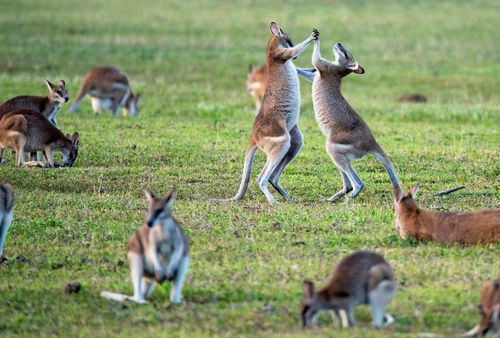
Photo by David Clode on Unsplash
Australia’s National Symbol Is the Emu
Australia’s national symbol, the emu, stands for progress as it cannot move backward easily. It appears alongside the kangaroo on Australia’s coat of arms.
One of the most notable fun facts about Australia is the cultural and historical significance of certain symbols, such as the emu, which is deeply valued by Indigenous groups and often appears in logos and official symbols.
Australia Has a Unique Submarine Tunnel
The Sydney Harbour Tunnel opened in 1992, is a unique engineering feat that runs beneath Sydney Harbour, linking the city center with the North Shore. It’s about 2.3 km long, made of sections placed on the harbor floor. It helps reduce congestion and improve travel routes.
Australia Has 2 of the 10 Largest Caves in the World
Australia has two of the world’s ten largest caves: the Nullarbor Plain caves and the Jenolan Caves.
The Nullarbor Plain contains extensive and vast cave systems, like Mullamullang Cave. Meanwhile, the Jenolan Caves in New South Wales are among the oldest known cave systems, dating back over 340 million years.
Australia is known for its interesting facts about its unique geological formations, which are both important for scientific studies and major tourist attractions.
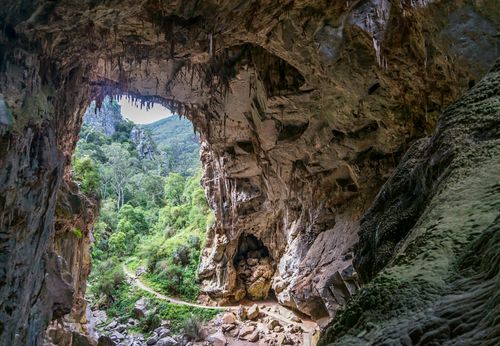
Photo by Dean McQuade on Unsplash
Australia’s Capital City Is Not Sydney or Melbourne
Unlike the commonly held belief that Sydney or Melbourne is Australia’s capital, Canberra is the nation’s true capital. It was chosen in 1913 for its location in the southeastern part of the country, away from the rivalry between Sydney and Melbourne.
Canberra is located in the Australian Capital Territory and was designed by Walter and Marion Griffin. It is the nation’s center of politics, being home to the Australian Parliament House, the High Court, and many other institutions in one area.
Australia Hosts One of the World’s Longest Bridge Over Water
A fun fact about Australia is that the Macleay River Bridge in New South Wales is one of the longest bridges over water in the world. At about 3.2 km, it spans the Macleay River and nearby floodplains. The bridge is part of the broader Pacific Highway upgrade which helps improve travel and links in the area.
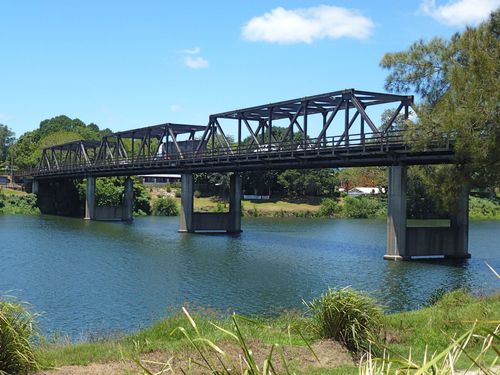
Photo by Witness King Tides is licensed under CC BY-NC-SA 2.0
Australia Has 10,000 Beaches
Australia has around 10,000 beaches, more than any other country in the world. They stretch along a coastline over 25,000 km long. Some of the most famous beaches include Bondi in Sydney, known for its surf culture, and remote ones in parks or on islands.
These beaches are not only popular for recreation and tourism but also shape the nation’s cultural identity.
Tasmania Has the Cleanest Air in the World
Tasmania is known for having the cleanest air globally, a distinction measured by the Cape Grim Baseline Air Pollution Station.
Located in northwestern Tasmania, the station monitors air quality as part of a global network that tracks air quality. The region’s isolated location, downwind from vast oceanic areas, reduces human-made pollution, ensuring consistently pure air.
The station has consistently recorded low pollution levels, making Tasmania a key site for environmental monitoring and research.
Australia Is the World’s Largest Producer of Opals
Australia produces about 95% of the world’s opals. Key mining areas are located in Coober Pedy, Lightning Ridge, and Andamooka, where various types of opals, such as black, white, and boulder opals, are extracted. These opals are highly prized for their unique colors and intricate patterns.
Opals are important for exports and have cultural and economic importance.
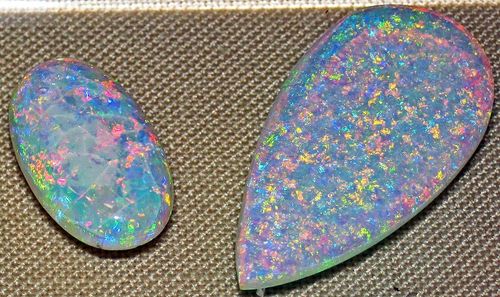
James St. John, CC BY 2.0, via Wikimedia Commons
Australia Was the First to Introduce Daylight Saving Time
Daylight saving time (DST) was first introduced by Australia in 1916 during World War I to conserve energy and resources.
The idea came into being from Victoria when clocks were moved one hour forward on October 1st, to make better use of daylight in the evening.
This practice was initially adopted as a wartime measure, but it became a more widespread habit in some states over time. Nowadays, daylight saving time during summer is observed by some states such as New South Wales, Victoria, and South Australia while not by others.
Sydney’s Opera House Took 15 Years to Complete
The Sydney Opera House, the most iconic image of Australia, took 15 years to complete, from 1957 to 1973, with its official opening on October 20, 1973.
The architectural design by Jorn Utzon (the iconic sail-like roof) presented many engineering problems, which caused delays and cost issues.
In 2007, the Sydney Opera House was designated a UNESCO World Heritage Site, recognizing it as a masterpiece of modern architecture.
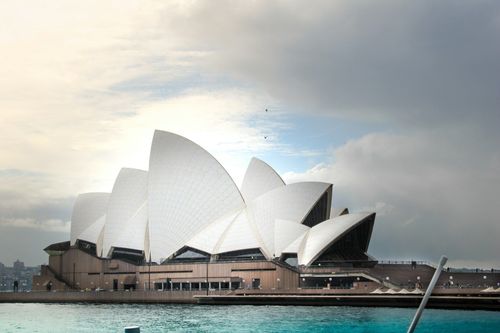
Photo by Antonio Dambrosio on Unsplash
Australia Is the Only Place to See the Duck-Billed Platypus
Did you know that one of the most fun facts about Australia is that the platypus, a creature that looks like a mix of several animals, can only be found there? The duck-billed platypus (Ornithorhynchus anatinus) is an egg-laying mammal native to Australia. It can be found in freshwater rivers, lakes, and streams across eastern Australia and Tasmania.
Platypuses are nocturnal, feeding on insects, worms, and shellfish during dawn and dusk. It’s a protected species threatened by losing its habitat and probably climate change. Conservation efforts are critical to ensuring the species’ survival in the wild.
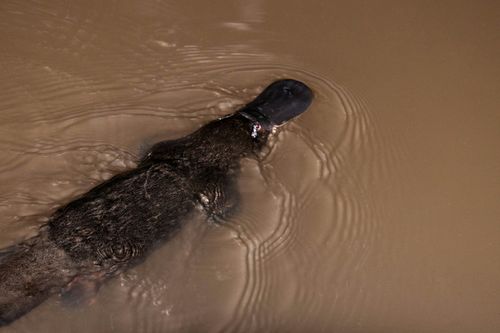
Photo by David Clode on Unsplash
Stay Connected in Australia with Yoho Mobile
Planning to visit Australia? How will you keep track of local events or stay in touch with family?
With mobile data, you’re always connected and informed. Yoho Mobile eSIM offers you reliable internet access no matter where the trip takes you. It’s the easiest and fastest solution—perfect for travelers who want to stay online while enjoying the trip.
🎁 Exclusive Offer for Our Readers!🎁Enjoy a 12% discount on your orders with Yoho Mobile. Use the code 🏷 YOHOREADERSAVE 🏷 at checkout. Stay connected and save more on your trips with our eSIM. Don’t miss out—start saving today! |
